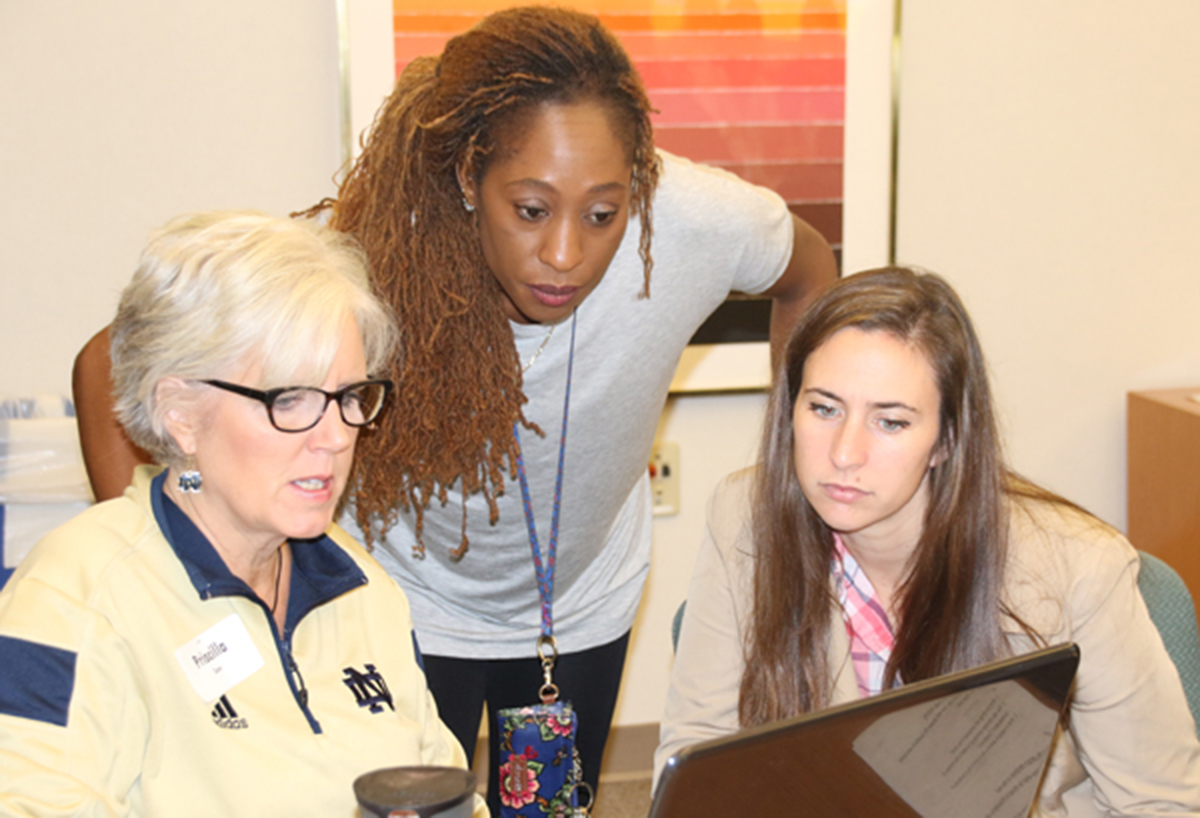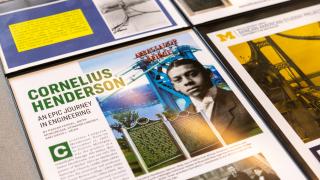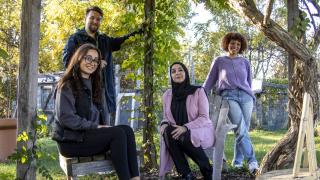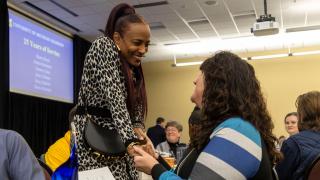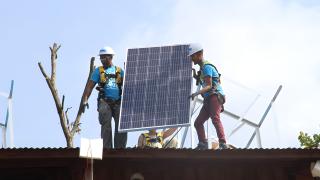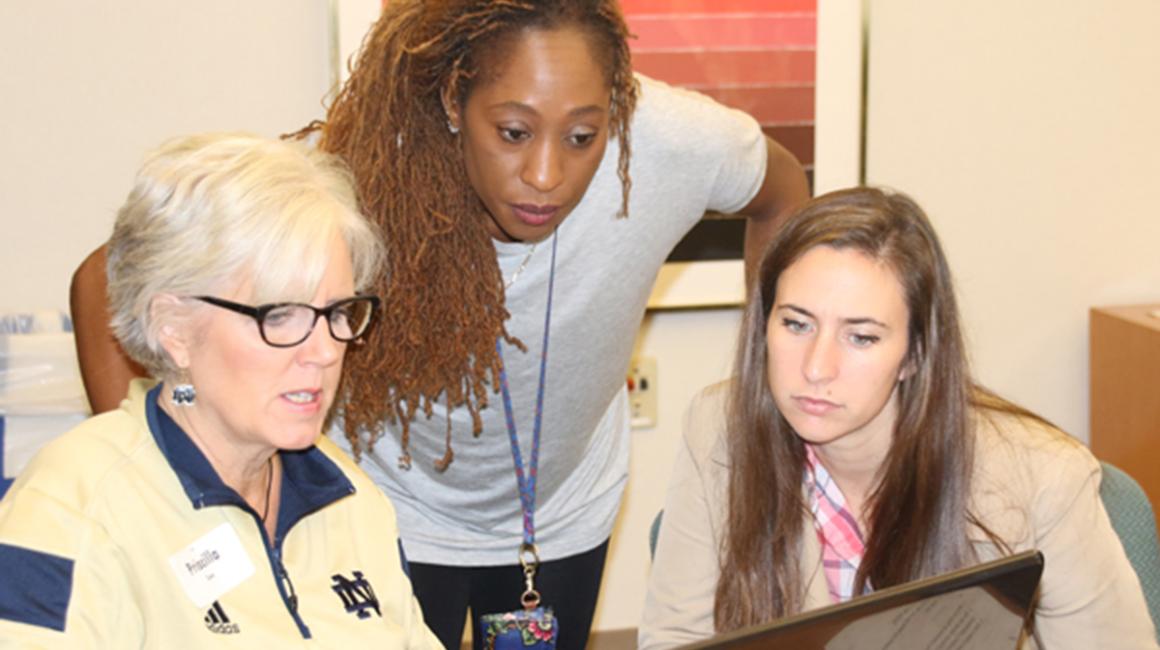
A world map sat in front of each student in Elise Bommarito’s secondary education classroom.
Using history, they added and subtracted items—like labels for the Phoenician alphabet and Chinese script—from the map and saw how, over time, change can spread. After mapping, the students were asked to analyze and compare the spread of the writing systems.
“A lesson like this provides a more concrete and spatial context to the concept of something diffusing globally,” said Bommarito, a teacher at Plymouth Christian Academy.
Students asked why they had to remove some Chinese script labels from their maps, which led to a discussion about cultural change too.
Bommarito said she learned this approach and was given resources to implement the lesson from the University of Michigan-Dearborn’s Wayne County Global Geography Project, an 18-month program designed to give local 6th, 7th and 9th grade teachers professional development training.
“One of the things I try to get my students to understand is how we are affected by the past. Something that happened long ago, like Phoenician merchants sharing this set of letters across the Mediterranean and having an influence on other cultures, does affect us,” she said. “If that didn’t happen, the majority of the world might not use alphabetic writing.”
Bommarito said she has brought many lessons—along with worksheet resources, a historic atlas and new technology practices—into her classroom from her time with the Wayne County Global Geography Project.
Karen Thomas-Brown, associate professor of social studies, and LaShorage Shaffer, assistant professor of child education, designed the Wayne County Global Geography Project, which focuses on global geography content, Geographic Information Systems (GIS), Universal Design for Learning (UDL) and pedagogy on the Eastern and Western Hemisphere, Contemporary Global Issues and Era 7-Global Crisis and Achievement from 1900-1945.
The professors were awarded a $220,000 Improving Teacher Quality grant from the Michigan Department of Education (MDE) to implement it.
Bommarito is one of 42 Wayne County educators to participate. Districts represented include Detroit, Dearborn, Taylor, Garden City, Livonia, Allen Park, Riverview and more. Teacher participants were recruited through Wayne County Regional Educational Service Agency (RESA).
Thomas-Brown, who is an urban geographer, and Shaffer saw a need for the program after looking at state test scores in social studies and geography and hearing from teachers about content areas they wanted to improve upon.
During the sessions, the area educators attend hands-on campus lectures, go on field trips, participate in GIS labs and hear prominent speakers. The Michigan Geographic Alliance, which Thomas-Brown is a member, also is heavily involved.
“We’ve designed a dynamic program,” Thomas-Brown said. “And by we, I mean all of us. It’s not me going out and finding experts. It’s learning what the teachers need. It’s a collaboration. It’s organic.”
In addition to the regular meetings, two of the teachers—Bommarito is one—will attend The Choices Program, a teacher-centered professional development workshop run by Brown University.
“Since Brown University couldn’t come to us, they are donating packets to all of our Wayne County Global Geography Project participants. Our teachers who go to their training will come back and then train their peers,” said Thomas-Brown.
In addition to providing materials for each participant’s teaching space, Thomas-Brown and Shaffer will do classroom observations. They will evaluate the application of the provided resources and the teachers’ application of the pedagogy that was taught during the project.
To measure the project’s effectiveness, Thomas-Brown said a Michigan Department of Education evaluator will look at before and after data—both in numbers and content knowledge of the teachers and the students in the classrooms. The professors will submit their final report to MDE at the end of September 2016.
The middle and high school teachers—who spend Thursday nights and Saturdays learning about topics ranging from new apps to incorporate into their classroom to GeoHistoGrams—say what Thomas-Brown and Shaffer are doing is working.
“I teach ninth grade world history and seventh grade geography. I’m here because they said they would provide teaching resources, show us how to use those resources and help us do a better job in incorporating geography into our teaching,” Bommarito said. “And they have.”

